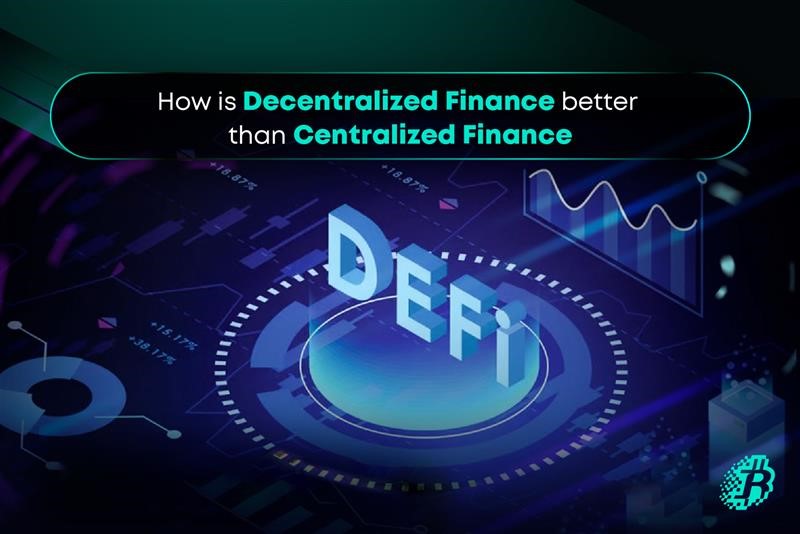Comparing Proof of Work with Proof of Stake
Ever wondered how blockchain networks come to an agreement about the true state of the ledger? There are various methods for achieving consensus in the blockchain world. The major two of them are Proof of Work (PoW) and Proof of Stake (PoS). As an aspiring blockchain enthusiast, understanding the difference between these consensus mechanisms is crucial. After all, the type of consensus protocol used by a blockchain network determines how secure and decentralized it can be.
Let’s unpack the key differences between Proof of Work and Proof of Stake. We'll explore how PoW, the consensus algorithm behind Bitcoin, powers a network through an energy-intensive mining process. Then we will dive into Proof of Stake and see why some next-generation blockchains are opting for a greener consensus option.
Understanding Blockchain Consensus: How Transactions Get Validated
To understand how blockchain works, you need to know how transactions get validated. This is done through a process called consensus.
With PoW, miners compete to solve complex math problems to validate transactions and get rewarded. The miner who solves the problem first adds the block to the chain. This method is secure but inefficient, using an enormous amount of energy.
PoS is more efficient. Validators stake their own coins to verify transactions. The more you stake, the more you can earn in rewards. But if you validate a fraudulent block, you lose your stake. This incentivizes honesty.
Proof of Work: The OG Consensus Mechanism
Proof of Work was the original consensus algorithm used by Bitcoin and other early blockchains. It's a democratic voting system where miners compete to solve complex math problems to validate transactions and create new blocks. The first miner to find the solution is rewarded with newly minted coins.
Here's how it works:
- Transactions are bundled into a block that needs to be validated.
- Miners run powerful computers that guess solutions to a math problem related to the block. This is known as ‘hashing.’
- The first miner to guess the solution, called the ‘nonce,’ announces it to the network.
- The other miners then check if the solution is correct. If so, the block of transactions is verified and added to the chain. The winning miner gets rewarded with new coins.
- The process then repeats for the next block of transactions.
The main benefit of Proof of Work is that it makes the blockchain very difficult to manipulate. To take control of the network, you would need to control at least 51% of the mining power. The downside is it requires a huge amount of energy to run the hashing algorithms.
There are also concerns that the mining reward system leads to ‘centralization’ where a few large mining pools dominate. Despite some flaws, Proof of Work has stood the test of time and secured the Bitcoin network for over a decade. It's a proven consensus method, but maybe not the most eco-friendly one!
Proof of Stake: The Greener Alternative
Proof of Stake (PoS) is an alternative method to Proof of Work for validating blockchain transactions and mining new coins. Unlike the energy-intensive PoW, PoS is much more environmentally friendly.
PoS consensus is achieved by validators - network participants who stake their coins by locking them up in a smart contract. The validators are selected to validate blocks and earn rewards based on the amount they stake. Think of it as a lottery, where the more tickets (coins) you have, the higher your chances of being selected.
The key difference from PoW is that PoS removes mining and instead uses an algorithm to pseudo-randomly select validators. Validators do not have to use powerful computing equipment to solve complex puzzles. They just have to show they have a stake in the network. This makes PoS vastly more energy efficient.
Some argue PoS is also more decentralized since it is easier for average users to participate as validators, whereas PoW mining has become concentrated in mining pools. However, PoS also has potential downsides like the ‘nothing at stake’ problem. If a validator stakes on multiple chains, they have nothing to lose by voting for multiple conflicting blocks. Solutions like slashing penalties, where a validator's stake is reduced if they act maliciously, help address this.
PoS is used by many major blockchains, including Ethereum 2.0, Cardano, Polkadot, and Avalanche. As more projects adopt PoS and transition from PoW, cryptocurrency could become a lot greener. PoS may be the mechanism that allows blockchains to scale while remaining decentralized and secure.
Overall, PoS and PoW are both viable consensus algorithms, but PoS triumphs in terms of energy efficiency and cost. For that reason, PoS could pave the way for mainstream blockchain adoption. The future is green!
Comparing Proof of Work and Proof of Stake
When it comes to blockchain consensus, the two most popular mechanisms are Proof of Work (PoW) and Proof of Stake (PoS). Both have their pros and cons, so let’s compare them.
PoW requires miners to solve complex math puzzles to validate transactions and create new blocks. The puzzles are difficult and time-consuming to solve but easy for others to verify. This makes the blockchain secure but slow. Bitcoin and Ethereum currently use PoW, leading to high energy consumption and environmental concerns due to massive mining operations.
On the other hand, PoS randomly selects validators based on the amount of coins they hold or stake. The more coins you stake, the higher your chances of being selected. Validators then vote to verify transactions and create new blocks. PoS is more energy efficient but potentially more centralized as the wealthy can have more control. Ethereum is transitioning to PoS with its Casper upgrade.
Some key differences:
- Energy usage: PoW requires massive amounts of energy to power mining equipment whereas PoS requires little energy.
- Security: PoW is arguably more secure since it's difficult for one miner to control mining power. PoS can be less secure if a few validators control most of the coins.
- Decentralization: PoW mining power tends to concentrate over time, leading to less decentralization. PoS allows more people to participate as validators, so it may be more decentralized.
- Block time: PoW typically produces blocks every 10 minutes while PoS aims for 1 minute block times. So PoS can be faster.
- Barriers to entry: PoW requires expensive hardware and electricity costs. Anyone with the necessary stake can be a PoS validator.
- Rewards: PoW rewards miners for completing puzzles. PoS rewards validators with transaction fees for verifying transactions.
Overall, both PoW and PoS have trade-offs in terms of security, efficiency, decentralization, and scalability. The consensus mechanism a blockchain chooses depends on its priorities and values. PoS may be better suited for smaller chains focused on fast and low-cost transactions. PoW could be better for larger chains where security is paramount. In the end, a hybrid approach combining both could help maximize the benefits.
The Future of Blockchain Consensus
The future of blockchain consensus is an exciting area of development. Hybrid models are also emerging that combine elements of multiple consensus mechanisms to balance their pros and cons. For example, a hybrid PoS/PoW model uses Proof of Stake for most blocks but switches to Proof of Work for some blocks. This helps prevent certain attacks while still reducing energy needs.
As blockchain ecosystems evolve, governance is also becoming an important consideration. Some blockchains are experimenting with decentralized autonomous organizations (DAOs) and other governance models that give stakeholders more control and flexibility in decision-making.
As you can see, Proof of Work and Proof of Stake each have their pros and cons in security, scalability, and energy efficiency. While Proof of Work has stood the test of time so far with Bitcoin, Proof of Stake shows a lot of promise and several major blockchains have adopted it. The future is bright for blockchain, and consensus will be a key part of helping it reach mainstream adoption. The options are expanding, the technology is improving, and the opportunities are huge. Buckle up!




